Many of you farm those out-of-eyeshot fields where it’s just you and your tractor’s diesel-fueled purr that permeate the pristine isolation. Actually, you have company. Under your feet teems a vibrant, yet invisible, world brimming with bacteria, fungi, and other soil microbes. Imagine that tablespoon you use to scoop up your morning coffee and, instead, substitute your field’s soil. Just 1 tablespoon contains 50 billion organisms.
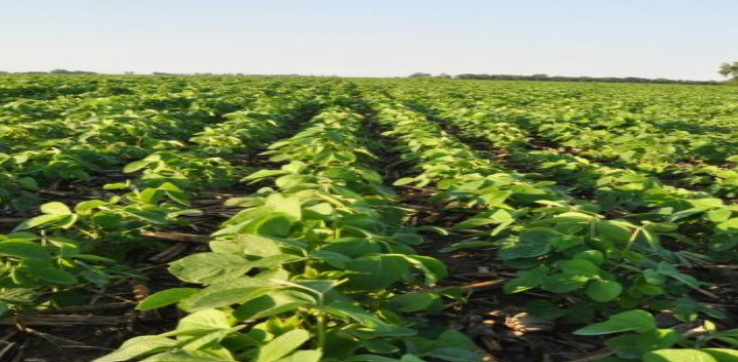
Some microbes are bad, such as the fungi that fuel white mold in your soybeans. Many are benign. Others key vital plant biological functions. “They help secure nutrients and naturally fend off pests,” says Thomas Videbæk, Novozymes executive vice president. Those natural microbes are getting some help from agricultural companies who are introducing biologically based products to aid natural microbial processes already occurring. “Microbes have negative aspects in that they can cause disease,” says Gwyn Beattie, an Iowa State University microbiologist. These drawbacks, though, are outweighed by many benefits. “Microbes are partners with plants,” she says.
An example is a mycorrhizal association, in which fungi colonize a host plant’s roots. This enables roots to access water and nutrients they otherwise could not garner. Those of you who plant corn that resists European corn borer and corn rootworm have used a biologically based product for around 15 to 20 years. Bacillus thuringiensis is a naturally occurring soil bacterium that’s fueled these insect-resistant genetically modified traits. This new generation of biologically based products can be applied through in-furrow, seed-coated, or foliar treatments. In soybeans, some of you have treated seed with Poncho/Votivo. The Votivo part consists of seed-coated bacterial spores that germinate and protect roots from soybean cyst nematode by forming a protective barrier. Get ready for more to enter the market. Monsanto and Novozymes, for example, have formed a business relationship called the BioAg Alliance. Meanwhile, companies like Marrone Bio Innovations are entering conventional row-crop production with products first used in the organic market.
If your buying radar perks up when a toothy-grinned salesman pitches you a bucketful-of-bugs product, don’t feel alone. On the surface, these products are reminiscent of a seller whose pitch consists of a smile, a shoe shine, and a “Gosh, we don’t know how it works. But, honestly, it will boost your yields 10 bushels per acre!” Many of today’s biologically based products, though, have data to back them up. “This space used to be seen as snake oil, and it’s not seen as snake oil anymore,” says Brad Griffith, vice president for Monsanto BioAg. Monsanto and Novozymes officials point to promising results in replicated company test plots. In 2014, Monsanto tested its biological products at 500 trials in 170 plots, says Griffith. In 2013, for example, eight to nine microbial-based seed treatment products showed a 10% to 14% yield bump in corn. In 2014, though, yield responses were lower, with just around a 2-bushel-per-acre yield bump on average. Year-to-year results can differ, notes Griffith. Last year was a much more favorable growing season year than 2013. Roots were able to grow on their own more favorably than in the more stressful 2013 growing season, he says. That led to microbial-based products that spurred root growth to have more favorable results in 2013 than 2014.
Even so, Monsanto says its seed treatments will deliver a $3 return on average for each dollar invested, says Doug Dorsey, Americas marketing director for Monsanto BioAg. “With commodity prices down, farmers will have to make (input) adjustments,” he says. “What we found both anecdotally and from market research is that the last thing farmers scrimp on is seed. Seed treatments are right behind. That’s because the investment is so critical in seed.” It’s important to note that these products don’t always show benefits. Tests by South Dakota State University over 11 South Dakota sites in 2009 and 2010 for QuickRoots, a fungal- and bacterial- based product, showed no increase for spring wheat yields. “Claims, testimonials, and advertisements do not substitute for replicated field studies,” says Ron Gelderman, a retired South Dakota State University soil scientist.
Improvements in technology, though, may better match products for specific fields. “One thing we have learned is that every field is different,” says Robb Fraley, Monsanto chief technology officer. Specifics like crop rotations and field history play a big part in targeting the right biological product for each field. Meanwhile, improved technology will help improve microbial-based products. “We have spent a lot of time breeding plants,” Beattie says. “We have not spent as much time breeding microbes.”
Traditionally, chemistry has been where it’s at with pest control in row crops. In the case of herbicides, multiple row-crop herbicide modes of action rolled out of companies after World War II like bids off an auctioneer’s tongue. These herbicide modes of action pretty much dried up, though, after the rollout of HPPD inhibitors like Callisto in the late 1990s. That’s left farmers to battle weeds that resist multiple modes of action with old chemistry. The resistance situation isn’t as critical with fungal diseases, although frogeye leaf spot that resists strobilurin fungicides has surfaced in 10 states since 2010. This carves out a resistance-management niche for microbial-based products. By providing another way to kill pests, it can mimic a new mode of action. Marrone Bio Innovations has labeled its biofungicide Regalia Rx for row crop use.
“Regalia Rx induces the natural defenses in the plant to help fight off disease and reach maximum yield potential,” says Jennifer Owens, Regalia portfolio manager. “The crops will be healthier and it adds value to the overall fungicide program and the bottom line.”
There’s a big qualifier, though, for biological-based products. Although they diversify a pest management program, they must first effectively kill the target pest. For example, biological- based products offer promise for diversifying ways to kill weeds, says Mike Owen, an Iowa State University Extension weed specialist. “I am hopeful these products can come about,” he points out. “But you have to overcome difficult issues with these biological products. They have to maintain efficacy over time.” Until this consistently occurs, chemicals combined with mechanical and cultural practices will be the weed control norm, he says.
Canadian hemp producers are missing out on a potential billion-dollar market opportunity due to government regulations, an industry group warns. Canadian hemp farmers are only permitted to use certain parts, the stalk and seeds, of the plants they grow. As a result, the growers are missing out in the market, said Kim Shukla, executive director of the Canadian Hemp Trade Alliance (CHTA). The Steinbach, Man.-based CHTA is pushing for reform on the regulations that control how much of the plant can be used, Shukla said, and she hopes a new government has the potential to bring change. Industrial hemp plants contain low levels, about 0.3 per cent, of the psychoactive ingredient THC. Marijuana plants typically contain five per cent or more. The parts of the plant that can’t be harvested also contain cannabinoids such as cannabidiol (CBD), which can treat schizophrenia, anxiety and post-traumatic stress disorder, according to Dr. Steve.
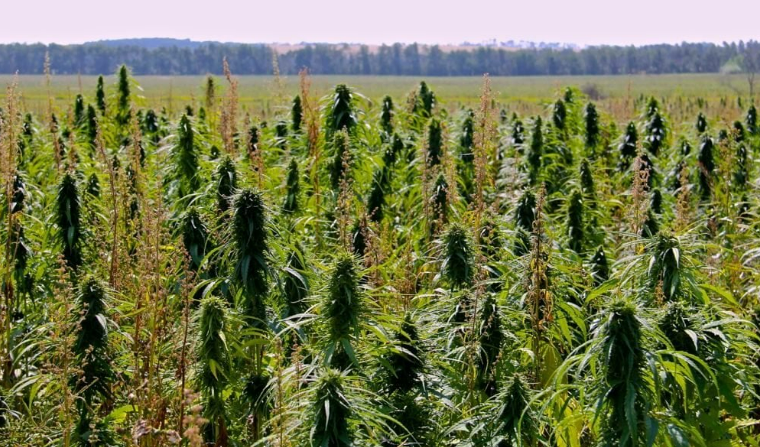
Laviolette of the University of Western Ontario. “While we are struggling and fighting against these archaic regulations, other countries are beginning to really come on as powerhouses,” Shukla said. There is a strong market demand for hemp, but the Canadian industry has struggled with its ability to process product and move it through the channel. Shukla cited a 2013 fire at a major hemp processor as a setback. The processor wasn’t able to work at full capacity until 2014. Next year’s hemp acreage in Canada will likely stay static at about 100,000 acres, she added. “So we can begin to manage some of our processing challenges, and as more processors come on board, and as more folks are involved in the marketplace, we’re looking forward to 2017.”
Most plants, including major crops, are highly inefficient at converting photosynthesis into energy. “We expect the solar cells we put on our rooftops to be at least 15 or 20 percent efficient,” said Robert Blankenship, a biologist at Washington University in St. Louis, Missouri, on Phys.org, a science and technology website. “A plant is at best one percent efficient…. If we can double or triple the efficiency of photosynthesis — and I think that’s feasible — the impact on agricultural productivity could be huge.” Many biologists are working on that problem, but a group of researchers at Oxford University have taken a different approach. Instead of trying to improve photosynthesis, they may have found a way to limit the damage that sunlight causes to crops when growing conditions are harsh. During times of stress, such as drought, the photosynthetic process can generate substances known as reactive oxygen species, which are toxic to plants.
The Oxford scientists discovered a gene that slows the photosynthetic process during times of environmental stress. Called SP1, the gene reduces the production of toxic compounds when the plant is suffering from drought, lack of nutrients or high salinity. Plants that over-expressed the SP1 gene in lab tests produced fewer reactive oxygen species and didn’t suffer serious or fatal damage. The Oxford scientists said all plants have the SP1 gene, so it “should be possible to create crops that can grow more easily in harsh environments” by modifying plants to “over- express” the SP1 gene.
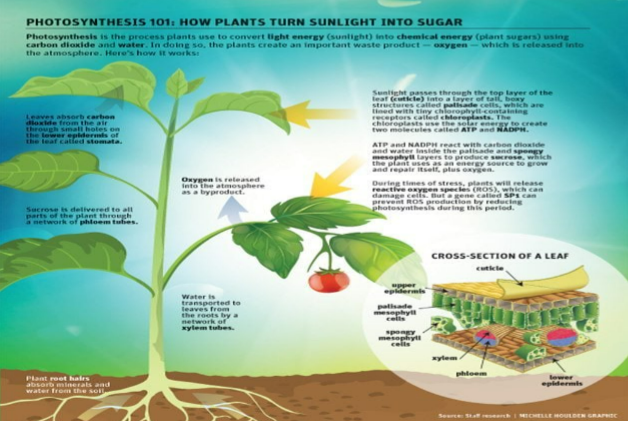
Jitao Zou, a National Research Council plant biologist and adjunct professor at the University of Saskatchewan, said the SP1 gene could be a novel discovery. “The finding is new to me, in terms of the specific function (of the gene),” he said. “You see reports like this type quite often, (but) this one was published in a high impact journal, Current Biology…. I think it’s a major paper.”
Zou said the SP1 gene is comparable to a rooftop TV antenna from the 1970s, which receives an abundance of signals if it is large and open. The SP1 gene closes up the antennae and makes it smaller, so the plant processes less sunlight. “(So) it doesn’t receive that much light and therefore it reduces reactive oxygen species,” Zou said. Zou said the Oxford finding is unique because most biologists want to enhance photosynthesis. “There has been a surge in interest in the photosynthetic process…. The majority of the scientists in this area are interested in how to improve photosynthesis efficiency and (crop) yield.”
Most plant scientists used to assume photosynthesis was inflexible and that it wasn’t possible to enhance the process. “In recent years, there have been some developments showing there are variations, meaning different plant species have variable capacity of photosynthesis,” Zou said. “That would indicate … you could improve (it).” Increasing photosynthesis efficiency from one to two percent would be a scientific accomplishment, but farmers don’t need crops that are larger or taller. They want crops that produce more yield. Scientists have used plant breeding to improve the harvest index of crops, which is the ratio of harvested product to the total plant weight of a crop. Zou said improving photosynthesis would amplify crop development, but the biological enhancements would also need to augment seed production.
Wild bee populations in parts of the United States are declining, largely due to habitat loss in areas with intense farming. Many studies have focused on the pollination and population patterns of domesticated honeybees. But like honeybees, wild bees are important pollinators of food crops. Dropping populations of wild bees in agricultural areas could affect crop pollination and result in higher costs for farmers, researchers report December 21 in the Proceedings of the National Academy of Sciences.
Ecologist Taylor Ricketts of the University of Vermont in Burlington and colleagues used land- use databases and input from bee experts to create a map of where wild bees were more and less abundant in the United States from 2008 to 2013. The scientists found that wild bee populations declined in 23 percent of the contiguous United States. Areas with the lowest relative wild bee abundance were those with the most agriculture, in the Midwest’s Corn Belt and California’s Central Valley, for instance.
These areas of mismatch, which include farms that grow fruits and nuts, produce 39 percent of crops in the United States that depend on pollinators. A lack of wild bees could increase costs for farmers who will need to truck in domesticated honeybees to pollinate crops or face lower food yields, Ricketts says. Creating wild bee habitat on field edges could help maintain wild bee populations and sustain crop pollination, he says. “You grow more abundant bees of diverse kinds and they spill out into your fields.”
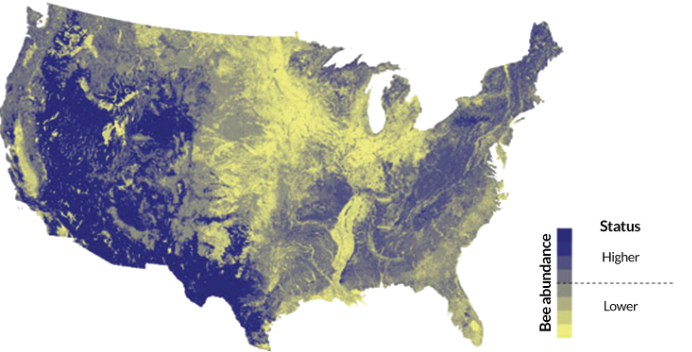
You can’t control weather. Nor can you control markets. You can, however, control time-tested agronomic techniques to bulge your bins and break through breakeven budgets.
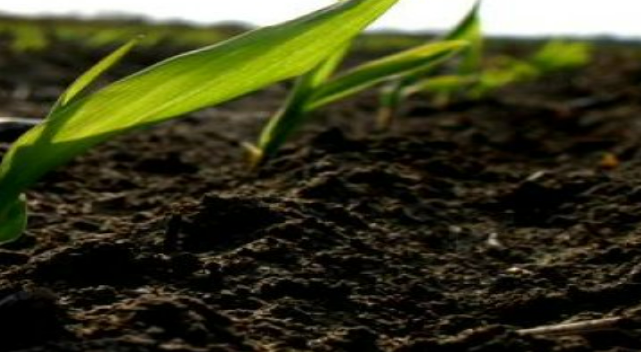
“The technologies we have today make it easy for us not to implement commonsense strategies because technology can do a lot for us,” says Bob Nielsen, Purdue University Extension agronomist. “It still is better, though, to use a combination of agronomic skills and common sense.” We've compiled 16 tips from industry and Extension crop specialists and farmers about how you can traverse today’s rocky economic climate – 7 are below. Some of the ideas cost money, some cost time, and some don’t cost either but, instead, are just commonsense management steps that you can implement.
“Many farmers don’t spend enough time evaluating plot results,” says Troy Deutmeyer, a DuPont Pioneer field agronomist in Dyersville, Iowa. “Seed company reps can do this for them, but so should farmers.” Why it pays: Iowa State University (ISU) data shows yields may differ by 40 to 50 bushels per acre between two hybrids in the same field with identical inputs applied. ISU data also shows environment can cause one soybean variety in the same field to outyield another by 15 to 20 bushels per acre.
“Everyone wants that silver bullet, that one hybrid that works every year,” says Mark Riehl, a Michigan-based DowAgroSciences agronomist. No such hybrid has ever existed. Back in the 1990s, though, Pioneer 3394 came close. Had this consistently popular high-yielding hybrid been a single seed corn company in 1994, it would have been the world’s second-largest seed firm. “Every hybrid has an Achilles’ heel, some kind of fault,” says Riehl. Pioneer 3394’s weakness – which Pioneer officials consistently warned farmers about – was gray leaf spot (GLS). Weather conducive to GLS finally arrived in 1995. Resulting GLS infestations decimated yields of this hybrid. Remember this when there’s a test-plot pretty boy in your area that consistently tops yields year in and year out. Finding its weakness can help you better plan your seed strategy. “Get your hands on as much independent and company data as you can,” says Purdue’s Nielsen. Why it pays: Gleaning gobs of data can reveal not only hybrid or variety strengths but also weaknesses.
Brian Herbst, Kasson, Minnesota, knows the damage that corn rootworm can wreak. So far, though, he hasn’t found rootworm at levels to justify planting rootworm-resistant corn. So he doesn’t. That saves him money. “I can buy conventional corn for half the price of traited corn,” he says. Challenges exist with this strategy. Since the bulk of the industry has paired top-notch genetics with trait packages, concern exists about planting conventional corn with less-than- stellar genetics. Herbst notes this is a drawback, but he says there are companies that have competitive conventional hybrids. “I’ve worked with AgReliant [Genetics], and they have some pretty good conventional numbers,” he says. Why it pays: Savings may be gleaned by planting corn hybrids minus a rootworm trait in low-risk corn rootworm areas.
There’s a flip side to all this, though. “Corn rootworm can make a big swing in a year’s time,” says Sean Evans, Monsanto technology development manager. “It can quickly go from a low population to a high one.” Be particularly aware of rootworm if you farm in an area plagued by extended diapause. That’s when rootworm thwarts the corn-soybean rotation by its eggs skipping hatching in soybeans and, instead, hatching in corn two years later. The variant western corn rootworm can also sabotage crop rotation by laying eggs in soybeans that hatch in corn the subsequent year. That’s why Herbst tightly monitors his area for any sign of corn rootworm. “If you have a rootworm issue, you better use traited corn,” says Herbst. Why it pays: “Without traits, we’ve documented yield losses of 60 to 80 bushels per acre,” says Evans.
Several years ago, a farmer telephoned Jim Camberato, Purdue University soil scientist, about a lousy corn stand on a newly rented field. The farmer started the year by broadcasting 50 pounds per acre of P205 and 100 pounds of K20 on a 20-year-old alfalfa field. Surprisingly, fired outer corn leaves – the calling card of potassium (K) deficiency – soon resulted. Subsequent investigation found no commercial K fertilizer had been applied during the preceding 20 years. “It was thought fertilizer wasn’t necessary on alfalfa,” says Camberato. Not so. A 4-ton-per-acre alfalfa yield removes 200 pounds of K20 and 52 pounds of P205 per acre annually. Over 20 years, this amounted to soil mining of 4,000 pounds of K20 and 1,040 pounds per acre. That’s why the K applied prior to corn planting did little to dent 20 years of K neglect. Why it pays: Soil testing before renting land and including fertilizer costs in rental agreements can save you from a crop disaster, says Camberato.
A summertime plane ride over your fields is a great way to detect what Jodi DeJong Hughes, a University of Minnesota Extension crops and soils educator, calls fluffy soil syndrome (FSS). “The more tillage you do, the more tracks you leave in the field,” she says. A summertime aerial view of a field that’s been excessively tilled will reveal dark green plants within the tracks. Unfortunately, that leaves paler plants over the rest of the field that’s been tilled into a pulp. Dark green plants result within tracks due to good seed-to-soil and root-to-soil contact. Normally, that’s good. Unfortunately, the eye-popping plants found in tracks aren’t occurring in the rest of the excessively tilled field, she says. Why it pays: Tillage-induced FSS prevents the seed-to-soil and root-to-soil contact that plants need, says DeJong Hughes.
Think the federal government can’t do anything right? It definitely aced 1970s antipollution laws that nixed atmospheric sulfur (S) emitted by power plants. What’s good news for your lungs, though, is lousy news for corn. It can’t access as much atmospheric S as it could 50 years ago. Increases in no-till, early planting, and heavy residue from high-yielding corn also create S deficiencies. Purdue data notes corn grain contains about 0.5 pounds of S for every 10 bushels. “Corn uses lots of sulfur that isn’t being put back in,” says Woodyard. Why it pays: S fertilizer sparked a mean yield increase of 38 bushels per acre on soils suspected for being S deficient in a 2006 ISU trial.
“The Agribusiness Support Fund project did wonderfully and we think its closure is untimely and harmful for the overall work done earlier,” said Mirza Ali, a resident of Yaseen Valley in Ghizer. Ali was addressing a press conference on Tuesday in Gilgit where other farmers were also in attendance.
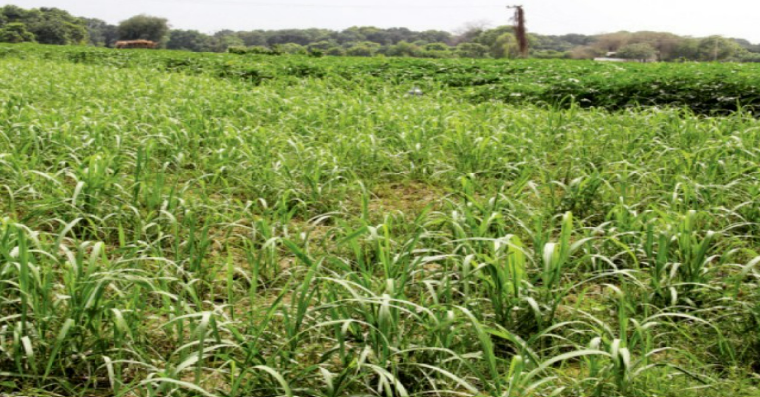
Various agriculture-related programmes were executed under the project in Ghizer previously. ASF was a five-year project funded through USAID; it started in 2011 and had to end this year but farmers said they were not prepared. The project addressed constraints impeding the development of the agriculture sector with a focus on horticulture and livestock sub-sectors. “This needs to be continued for the next five years as we aren’t able to reap what we had recently sown,” added Ali. Ali said they registered a body under the name of Haba and were going in the right direction but, “the withdrawal of support and guidance is likely to leave us in the lurch.”
Villagers said under ASF, more than 1,130 farmers were trained how to produce and market apricots and a similar number of farmers were trained in the potato business. “They spent around Rs200 million on us during the five years,” said Ali, who is also the chairman of Haba. The USAID officials in G-B could not be contacted for comments owing to closure of the project office.
The smart alecks of old used to define optimal corn and soybean planting time this way:
Looking back, those wiseacres came pretty close to hitting the mark. The frigid soils that cause you to pop up like a jack-in-the-box wreak havoc on seed germination and emergence. That chill has increased as no-till and reduced tillage acres have surged. Additional cold-coddling residue fuels more fungal diseases. While more residue doesn’t directly spawn early-season insects, it does extend the insect exposure time for seeds and seedlings. That’s why seed companies have coated fungicide on corn seed for decades. More recently, firms have also coated seed with insecticides to deter early-season insects like wireworms and seed corn maggots.
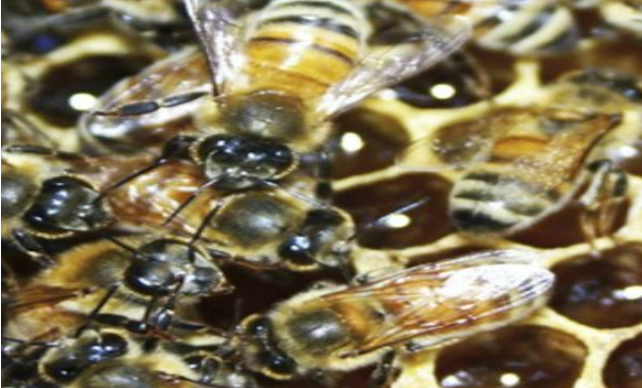
Ditto for soybeans, particularly when it comes to bean leaf beetles and soybean aphids. It’s estimated that 45% to 50% of soybeans are now treated with both insecticide and fungicide, according to Bayer CropScience data. Spendy seed has also fueled seed treatment growth. If you’re paying big bucks for seed, you want to protect it from early-season stressors.
Corn and soybean insecticidal seed treatments belong to the neonicotinoid family. Imidacloprid (Gaucho), clothianidin (Poncho), and thiamethoxam (Cruiser) protect seed and are environmentally friendly with one exception. They’re Hades on honeybees if direct contact results. Clothianidin, for example, is one of the most toxic substances known for honeybees, notes Christian Krupke and Greg Hunt, Purdue University entomologists who analyzed the impact of neonicotinoid seed treatments on honeybees. Last February, 11 environmental groups called for an immediate ban on neonicotinoid insecticides due to honeybee concerns.
There’s an economic issue at work, too. An EPA analysis issued last October found little economic benefit for neonicotinoid insecticidal soybean seed treatments. EPA officials did say these treatments had merit against sporadic and unpredictable pest infestations, particularly in the South. Still, such benefits are not widespread, the report’s authors said. At best, they can offer $6 per acre in benefits. In most cases, though, the EPA analysis states neonicotinoid insecticidal soybean seed treatments add no revenue to your farm.
So should you buy neonicotinoid insecticidal seed treatments? Their use makes sense on corn, says Mike Gray, a University of Illinois Extension entomologist. “Corn is at greater risk to stand reductions that can be caused by a variety of secondary soil insects,” says Gray. That’s because no effective rescue treatments exist for pests like white grubs and wireworms. If these insects ravage a corn stand, the only choice you have left is replanting. Regarding soybeans, though, many entomologists agree with the EPA. Last December, 18 Midwestern land-grant university entomologists wrote to the EPA, stating that widespread and prophylactic use of neonicotinoid seed treatments is unnecessary and ill-advised. “Unless soybeans are at high risk by the only significant early-season pest bean leaf beetle, blanket insecticide seed treatments are not a good idea,” says Ada Szczepaniec, a South Dakota State University Extension entomologist. That’s because this approach shifts away from integrated pest management (IPM). This model uses a variety of management tools that includes pesticide applications linked to predetermined economic threshold levels.
The IPM acronym still stands, but it could just as well stand for insurance pest management. This strategy automatically uses insecticidal seed treatments and insect-resistant and herbicide- tolerant seed as insurance to manage pests. This approach runs the risk of resistance eventually developing, due to widespread repeated use of a single insecticide class, say the Midwestern entomologists. Some Southern land-grant university entomologists disagree, though. Scott Stewart, a University of Tennessee Extension entomologist, says cooperative work by Southern entomologists finds a consistent 2-bushel-per-acre soybean yield response in the MidSouth due to insecticidal seed treatments. That’s based on more than 170 trials over the last decade. He adds seed treatments will increase in importance as cover crops increase the risks of early-season and soil insects.
Still, EPA’s analysis coincides with a 2005 to 2007 land-grant university study in six locations in Minnesota, Iowa, and Michigan that compared four soybean-aphid management systems. They included:
O’Neal notes that this is one pest, though, and not the wider spectrum of insects for which the neonicotinoid insecticidal seed treatments offer protection. Jeff Anderson of Webster City, Iowa, remembers what it was like to grow soybeans before the debut of the neonicotinoids. “Bean leaf beetles would eat the cotyledons right down to the ground,” he recalls. Seed treatments now nix those concerns, he points out. Neonicotinoid seed treatment manufacturers also disagree with EPA’s assessment. “In spite of what EPA concludes, they do have yield benefits,” says Caydee Savinelli, pollinator and IPM stewardship lead for Syngenta. A study done by AgInfomatics with 14 independent academics and commissioned by Syngenta, Bayer, and Valent with support from Mitsui, pegged a 2.8% yield boost due to neonicotinoid insecticide seed treatments. Other benefits exist. Syngenta officials say thiamethoxam (Cruiser) also has shown seedling vigor properties that spark healthier, stronger, and faster-growing seedlings. Neonicotinoid insecticides also spare beneficial insect predators that prey on yield-damaging insects like aphids. That’s opposed to foliar broad-spectrum organophosphate and pyrethroid insecticides that kill beneficial and harmful insects alike.
If there’s anything that could sink the use of neonicotinoid insecticidal seed treatments, though, it’s their impact on honeybees. Mites, adverse weather, habit loss, and diseases also pressure honeybee populations. Even so, Germany restricted neonicotinoids after exposure fueled a massive honeybee kill in 2008. The European Union followed up by suspending neonicotinoid insecticidal seed treatments for two years. The consequences of the EU’s neonicotinoid suspension started being apparent after one year, says Savinelli. British farmers are struggling with flea beetle outbreaks in canola due to the neonicotinoid insecticide seed treatments suspension. “Treated seed is not the problem,” she says. “It is when growers put talc in and use pneumatic planters rather than planters using finger pickups. The pneumatic planters and abrasive talc cause the neonicotinoid treatment to dust off.” The resulting dust can impact honeybees by traveling to nearby pollinating plants and hives. Savinelli says dust-off is more problematic with corn than soybeans due to the shape of the seed.
To reduce dust-off, Bayer CropScience is offering a product this year called Fluency Agent available to planter manufacturers. In laboratory tests, Bayer officials say this product slices the amount of total dust release in treated seeds by 90% vs. talc and 60% vs. graphite. “Fluency Agent is the best tool on the market for reducing dust,” says Kerry Grossweiler, manager of equipment and coatings, Seed Growth for Bayer CropScience. Savinelli says studies show dust- off isn’t coming from each individual row, but rather from the planter’s vacuum exhaust. A dust deflector placed over the exhaust is currently being tested in Europe, Canada, and the United States, she says.
Following are three steps entomologists and company officials recommend to minimize dust-off.
Winds blowing toward a beehive could harm honeybee populations.
“If growers know where they will be planting, communicate with neighbors who are beekeepers,” says Grossweiler. “If they know you are coming, they may be able to cover hives or move them.” You may obtain hive locations through the Drift Watch program in 12 states and a Canadian province (driftwatch.org).
Uniform seed flows well and can reduce dust-off, says Savinelli.
The American Seed Trade Association has an extensive guideline list online. Find it at seed-
treatment-guide.com.
If farmers can be enticed to plant native vegetation strips, there may be room for both bees and neonicotinoid insecticidal seed treatments, says ISU’s O’Neal. An Iowa program called the Science-Based Trials of Rowcrops Integrated with Prairie Strips (STRIPS) teams up scientists, educators, farmers, and Extension specialists to install prairie strips adjacent to cropland and waterways. By converting just 10% of a crop field to diverse, native perennials, farmers can provide pollinator habitat. There’s also potential to slice sediment loss by 90% and halt field nitrogen losses by 85%. “We’ve observed a remarkably diverse community of bees in corn and soybean fields in central Iowa,” says O’Neal. “Unfortunately, these two crops do not provide nectar and pollen throughout the time bees are active. With vegetative strips, it’s a 24/7 buffet for them throughout the summer. By limiting sediment and nitrogen loss and providing habitat for pollinators, our research suggests we can contribute to agriculture and conservation at the same time.”
Canada’s 2015-16 flax crop could be about 30 per cent bigger than last year’s, according to an expert in the industry. “A million tonnes is what they’re talking about for Canada,” said Richard Zacharias, general manager of Prairie Flax Products near Portage la Prairie, Man. While the majority of the crop still has to come off, samples Zacharias has seen so far have left him optimistic. “The quality is good, the yields are good; they’ll be average to above-average,” he said. The yields he’s seen lead him to think the crop could average 30 bushels an acre, he said, which would be up slightly from last year’s output. According to Prairie Ag Hotwire, a bushel of flax is selling for $12, slightly softer than a year ago. “The market is probably going down a bit because it was really a big crop this year, so once you get a larger supply the demand obviously is eased a bit, so prices do tend to go down a little,” Zacharias said. “It is certainly not going up, that’s for sure.”
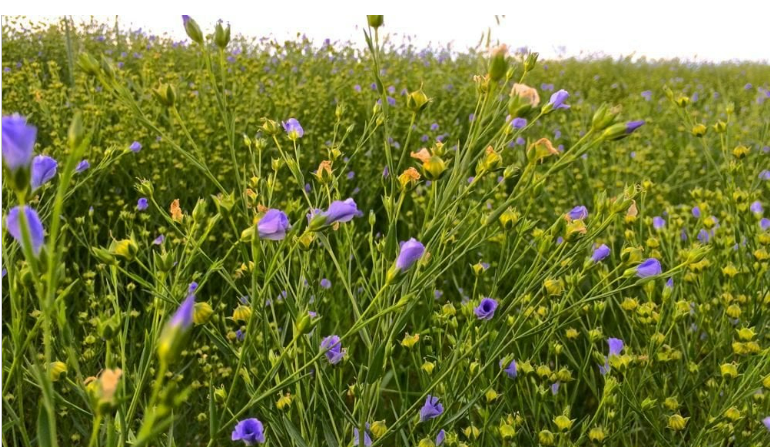
One saving grace has been the decline in the Canadian dollar. “Seventy per cent of our sales are in U.S. dollars,” said Zacharias. Flax’s three main uses are in the bakery sector, pet food and animal feed. While the flax harvest is well underway, Zacharias said more half of it is still on the field — partly because of how well it handles the cold. “You can actually harvest it after a dead frost; it doesn’t get damaged.”
It was a good year for all types of corn in southern Alberta, including crop grown for silage, earlage and grain. Corn heat units reached 2,500 in some regions, which was higher than the average of 2,200 to 2,400. That, when combined with warmer nights and plenty of irrigation, led to high silage tonnage and grain yields in the 140 to 150 bushels per acre range. Lloyd Van Eeden Petersman, a Dupont Pioneer representative from Taber, Alta., told an Oct. 28 corn production meeting that warm spring weather started the season and “we just kind of stayed ahead of the norm.” It was a marked contrast to last year, when a killing frost occurred in mid- September, which limited the amount of grain harvested. Irrigation pivots ran from early May, producing corn six to eight feet tall that touched the truss rods on the pivots.

Goss’s wilt, a bacterial disease, made another appearance, said Van Eeden Petersman. It didn’t limit yield in most cases, but its effects depend on growth stage. Goss’s wilt needs an entry point, which can be furnished by sand blasting, hail or broken stalks in violent storms. It doesn’t do much damage if it enters plants later in their growth stage, but it can limit photosynthesis and thus yield if it is able to attack in early July. The disease tends to be more of a problem in fields where corn has followed corn because spores can overwinter in crop residue. Burying that residue provides some protection, as does baling, but that can transfer spores to another field. Van Eeden Petersman also re-ported the appearance of holocus leaf spot in corn crops this year.
It is a bacterial disease so it can’t be controlled with fungicides. He said holocus leaf spot looks similar to foliar burn that might occur from herbicide or fertilizer and usually doesn’t limit yield. “It’s generally just a cosmetic thing,” he said. European corn borer is common in this part of Alberta, though most varieties now have the B.t. trait, which provides protection. Once again, planting corn after corn exacerbates the problem. This year also brought two-spotted spider mites to some cornfields. “Perhaps we’ve had this before but haven’t really seen it,” he said. The mites kill plants from the bottom up and can affect ear development. Signs of two-spotted spider mites include a dusty appearance in plants at field edges and a cottony-looking material on the undersides of leaves. The mites are tiny and red, so producers might notice a dusty reddish material clinging to their jeans after field scouting.
Two new genetic insights could make plants’ sex more convenient for the people growing and eating them. Genes that keep a plant from fertilizing itself can be transferred successfully from one species to another across an unexpectedly wide evolutionary gap, says Noni Franklin-Tong of the University of Birmingham in England. And research on melons and cucumbers shows how the interplay of three main genes controls the shifts between unisexual and bisexual blooms, says Abdelhafid Bendahmane of the INRA French national agricultural labs in Évry. Bottom of Form The new papers, both in the Nov. 6 Science, sharpen the understanding of plants’ control over how sexual organs develop and function in individual blooms. Even though textbook diagrams show male and female flower parts snugged into a single blossom, plants vary enormously in terms of sex and blooms, with important implications for agriculture. For certain crops, people now emasculate bloom after bloom by hand to make sure that seeds will be true hybrids instead of self-fertilized offspring, for example. Tweaking genes that guide plant sexual encounters could ease the production of hybrid seeds, Franklin-Tong says.
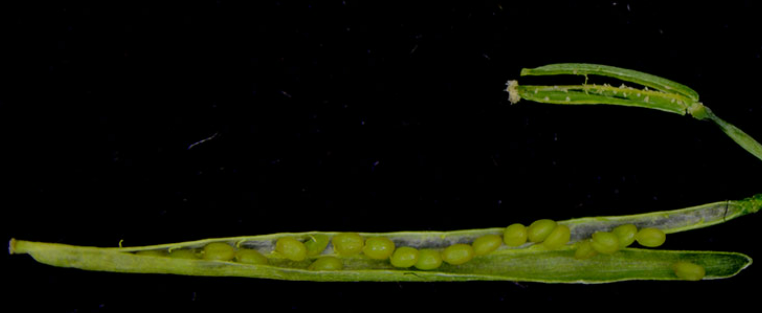
For about three decades, she has worked with the wild Papaver rhoeas, a fixture of commemorations of soldiers who died in World War I. The poppy has a robust self- incompatibility system built into its flowers that involves comparing his-and-hers versions of a particular protein. If the (male) pollen’s version of the protein matches receptive sites on the flower’s female stigma — indicating that both proteins probably came from same plant — the female tissue signals the pollen to commit cell suicide, and no seed forms. At least two other protocols for self-incompatibility have evolved among plants. Self-chastity for flowers reduces the risks of inbreeding, which can dim the vigor of offspring. But the heightened incompatibility raises the risk that a bloom won’t find enough suitable pollen to make as many seeds as it could. Franklin-Tong and colleagues decided to try coaxing the poppy’s self-chastity system to work in a plant group with a very different protocol. Plain curiosity, or “some crazy bit of stupidity” as she puts it, inspired the attempt to transfer poppy self-incompatibility to the mustard family’s Arabidopsis thaliana.
The little white-flowered Arabidopsis, popular in laboratories, doesn’t have its own self- incompatibility system and can in fact self-fertilize. But relatives in the mustard family use an unpoppylike system. That system blocks selfie seeds with different cell chemistry and puts the receptive identity-checking site on male parts instead of female parts. Over several years, the team coaxed both male and female tissue of A. thaliana to turn on genes transferred from the poppy. The researchers now finally present results from whole plants. The transfer “worked like a dream,” Franklin-Tong concludes. So when she asked how long ago the poppy and mustard ancestors had diverged, she was startled to discover they had parted ways more than 140 million years ago. The transferred genetic pieces had succeeded in preventing self-fertilization in a very different plant.
Transferring genes for self-incompatibility from a very different plant has prevented seeds from forming (top) in this mustard cress the way they normally would (bottom). Noni Franklin- Tong “An important result,” says Spencer Barrett of the University of Toronto, who has also studied the evolution of self-incompatibility systems. “To my knowledge it has not been done before.” Of course, harnessing such solutions in crops would be useful only if genetically modified plants prove acceptable to people who buy the harvest, Bendahmane of INRA points out. His own work on how flowers control their sex could do more than reduce the need for hand emasculation. For most crops, from apples to zucchini, the female organs grow into what’s harvested. The more female flowers a plant can be coaxed to make, the bigger the yield, he says. On the individual melon plants his lab works with, flowers with only female organs sprout on young side branches diverging from the main spine of the vine. Elsewhere, flowers are all male. Now Bendahmane’s lab and Israeli colleagues have pieced together how an individual melon plant orchestrates such sexual differences.
The interplay of three genes turned on or off in different configurations can create the variety, the team reports. For a female melon blossom, researchers found that a gene called CmACS11 turns on in the sap-carrying cells in the plant’s phloem plumbing that runs through side branches. This gene suppresses a macho gene (CmWIP1) that would otherwise drive flowers there to grow up male. And a third gene (CmACS-7), turning on in the side branches’ emerging female sex organs, completes the effect by suppressing formation of male sex organs in their bloom. In other parts of the plant, with the go-female gene ACS11 turned off, the go-male gene kicks on, and there’s no female organ tissue with gene activity that prevents male organs. And when a mutation disables the third gene in the trio, flowers can grow up bisexual — with organs of both sexes inside the same flower. With genes for one sex suppressing the other’s, “it’s a war,” Bendahmane says. The shenanigans of these genes suggest evolutionary scenarios for how plant ancestors with one configuration of flower sexes gave rise to quite different arrangements, Bendahmane says. And plants have certainly switched their arrangements over the eons of green history. The species that now segregate male and female functions on different individuals, as people do, tend to have bisexual ancestry. Now geneticists are a little closer to understanding, and tinkering with, plant history.
The year’s cash rent or crop share is often the focal point of farmland owner-tenant talk. The importance of soil health, though, is a growing point in talks for some landowners and tenants.
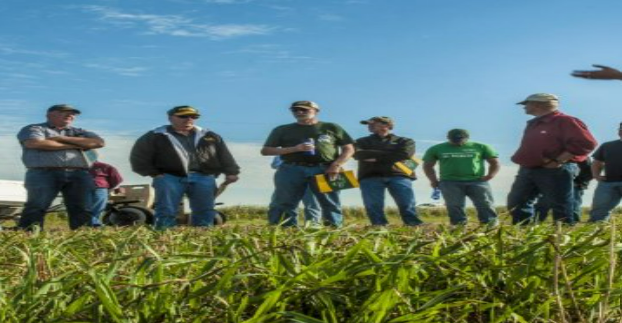
In this article by Elisa O'Halloran, a Webmaster and writer for USDA's Natural Resources Conservation Service, are questions and answers revolving around soil health. Barry Fisher, an Indiana farmer and nationally recognized soil health specialist with USDA’s Natural Resources Conservation Service, recommends farmland owners ask potential renters these five soil-health questions.
Organic matter (carbon) may be the most important indicator of a farm’s productivity. The amount of soil organic matter often determines the price farmers will pay to rent or buy land. Finding a farmer who is interested in building organic matter by using practices like no-till and cover crops is like finding a bank with a better rate on a Certificate of Deposit, Fisher says.
Fisher says maintaining fertility and pH levels are important to your farm’s productivity. Regular soil testing can give an indication of trends in soil fertility, pH and organic matter levels in each field. These tests will determine the amount of fertilizer each field needs. If a field has a history of manure application and very high fertility, a farmer could save money by planting cover crops to keep those nutrients in place rather than applying more nutrients that may not be needed.
Some landowners like the look of a clean-tilled field in the springtime. That “nice look” is short lived, though. “The reality is a field that has bare soil is subject to erosion and loss of organic matter, since it no longer has the protective cover from the crop residue on the surface,” Fisher says. “No-till farming utilizes the crop residue to blanket the soil surface to protect it from the forces of intense rainfall and summer heat. This protective blanket will conserve moisture for the crop and prevent loss of soil from wind erosion, water erosion and carbon that could be burned off by summer heat.”
“Like no-till, cover crops provide a green, protective blanket through the winter months or fallow times. The green-growing cover is collecting solar energy, putting down roots and providing habitat when the soil would otherwise be lifeless and barren,” says Fisher. This habitat provides food and shelter for a broad population of wildlife above ground and beneficial organisms below ground. As the new life emerges, cover crops hold onto the nutrients left from the previous crop and in turn releases them to the next crop. The solar rays these plants collect are powering photosynthesis, taking in carbon from the atmosphere to produce food for the plant and the organisms living in the root zone. This same process also releases clean oxygen to the air and builds nutrient rich organic matter in the soil.
To improve soil health, think long-term. According to Fisher, the duration of the lease agreement is perhaps the most critical matter in encouraging the adoption of these soil health management systems. “Farmers can actually build the production capacity and resiliency of their landowner’s soil, but it may take several years to realize the full benefits of doing so,” Fisher says. He suggests that landowners consider multiple-year leases that provide tenure security for the tenant. Longer tenures give both landowners and tenants more opportunities to improve soil health and realize the resulting longer-term production and profitability gains through sustainable conservation practices. “Improving soil health can provide long-term, stable dividends for you, your family and your farming partner,” Fisher says. “Improving soil health also can decrease the effects of flooding, make food production more resilient to weather extremes, and improve the health of water and wildlife, as well,” he adds. Fisher encourages landowners to learn more about the basics and benefits of soil health management systems and to begin the soil health discussion with their farming partner right away. “Even if you’re not a farmer or landowner, everyone has a great stake in improving the health of our soil,” he says.
This was said during a seminar organized by Pakistan Society of Computational Biology at Basecamp Peshawar on Sunday. The event was attended by experts and specialists from across the country and abroad. A large number of students, parents and lecturers were also present on the occasion. During the session, participants raised pertinent questions about career prospects in biotechnology. Addressing the attendees, Institute of Integrative Biosciences Director Dr. Faisal Khan emphasized the need to support students who aspire to work in this field.
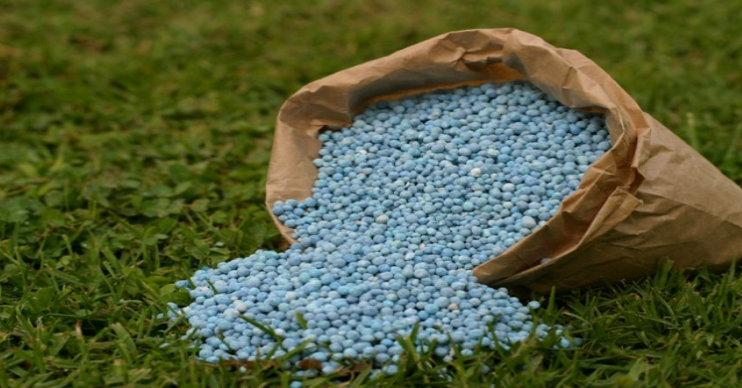
“Most students who are studying at the undergraduate level find it difficult to prepare for a career in biotechnology,” he said. “At this stage, they need support and assistance within and outside their degree programmes. This will broaden the scope for biotechnology in the country.” Dr Johar Ali, head of genomics at Rehman Medical Institute, insisted only those students who are interested in this field should pursue a career in it. “More often than not, parents fail to consider their children’s needs. They see them as robots that have no choices or personal preferences. If we want our children to excel in life, we must allow them the liberty to choose subjects they are interested in.” Students at the seminar also drew attention to the lack of transparency in the funding process and the failure to carry out technical audits of research conducted at public sector universities. Some of them also pointed out how a lack of opportunities had led to a continuous brain drain and said the private sector should foster an environment for research and development.
With the help of industry and Extension crop specialists and farmers, we’ve compiled 16 time- tested agronomic techniques to help your 2016 crop be as successful as it can be. You’ll find the 9 steps to complete during the growing season below, but to see Part 1 of this story you’ll need to read 7 steps to complete before planting 2016.
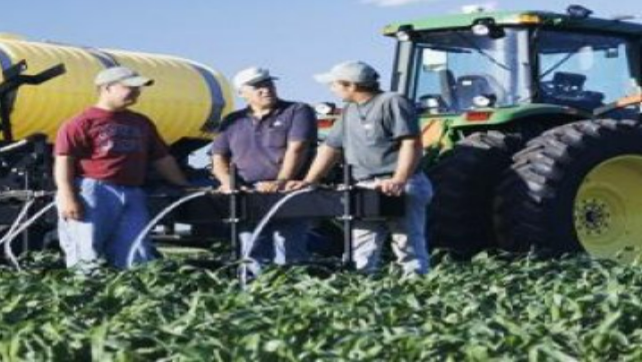
Thirty years ago, a summertime service station stop included an elbow-grease squeegee wipe of your windshield to clean off the European corn borer (ECB) moths you hit. These days, you’d be hard-pressed to find any ECB moths flying around. So are they no longer a pest? No, no, and no. “It is not going extinct,” says Kevin Steffey, technology transfer leader for Dow AgroSciences. ECB can still cause damage if you forgo an ECB-resistant trait. Why it pays: “European corn borer can survive on around 200 species of plants,” says Steffey. “It is quite literally lying out in the weeds, waiting for us to drop our guard.”
“The best time to kill a weed is before it gets out of the ground,” says Luke Peters, Dow
AgroSciences corn herbicides product manager. A pre-emergence residual herbicide can nix
weeds from stealing sunlight, water, and nutrients from crop seedlings. Weather risk exists. Dry
weather can halt activation, while rampant rainfall can wash pre-emergence herbicides out of the
weed seed germination zone. Applying a pre-emergence residual herbicide also adds an extra
$15 to $25 per acre in costs.
Why it pays: Rather than a cost, though, think of it as an investment. Trial data compiled by
Purdue and Ohio State University shows adding a pre-emergence herbicide to a post-emergence
glyphosate pass boosted soybean yields 4 to 9 bushels per acre. Even with $8-per-bushel
soybeans, the $32- to $72-per-acre gain more than paid for pre-emergence herbicide application.
Stop Reapplying an Ineffective Post-emergence Herbicide. There’s a football cheer that goes,
“Hit ’em again, hit ’em again, harder, harder.” That cheer may light a fuse under a lazy middle
linebacker, but it’s lousy advice for applying an ineffective post-emergence herbicide. “If it
didn’t work the first time, it’s not going to work the second time when weeds are even bigger,”
says Dawn Refsell, Valent’s manager of field development for the Midwest commercial unit.
“Applicators will think, ‘Well, I did something wrong, I better apply it a second time. May be
not.
Around 90% of weed samples submitted to the University of Illinois (U of I) in 2014 were
confirmed as resisting at least one herbicide. The 2015 results hadn’t been compiled at press
time. Still, the sheer number of 1,700 water hemp samples from 338 fields submitted this year
suggests weed resistance hasn’t slowed, says Aaron Hager, U of I Extension weed specialist.
Why it pays: Poor performance may be due to environmental conditions during application.
Still, there’s a good chance surviving weeds resisted the initial post-emergence herbicide you
applied. “If the post-emergence herbicide fails, try something different like tank-mixing and
using herbicides with effective sites of action. Don’t plan for failure,” says Refsell.
Weed resistance doesn’t start as a train wreck of soybean-choking water hemp. Instead, scattered patches or single weeds surface later in the growing season. “If you see this, you need to do something,” says Mike Owen, ISU Extension weed specialist. “It shows resistance is evolving and spreading.” Don’t let them go through your combine. “There is no better piece of equipment to distribute weeds than a combine,” says Owen. Instead, clean them up before harvest. “If you have water hemp in a low spot or prevented-planted acres, get out and hand-rouge them or use a backpack sprayer,” says Ryan Rector, Roundup technology development manager at Monsanto. “The key is to control those weeds before they set seed for next year.” Why it pays: Next year’s crop – and you – will see the equivalent of 250,000 upraised middle fingers if a water hemp plant escapes control. That’s how many seeds one water hemp plant can shed at season’s end.
“I have seen numerous instances where tillage passes made on wet soils led to horizontal compaction layers,” says A.J. Woodyard, BASF technical crop production specialist. “That can negatively affect everything for the rest of the year.” It’s understandable why this occurs. If the 10-day forecast shows continual rain, fieldwork often wins. Still, expect congested and shallow roots that fail to penetrate compacted hardpan if fieldwork occurs under excessively wet conditions. Why it pays: Once compacted hardpan results, a crop can’t recover, says Woodyard.
You might have to don your long johns and keep a thermos full of coffee handy for this one. That’s because if fields are fit to work, you can likely plant soybeans earlier than you think. “Time and time again, the best time to plant soybeans in central Illinois is late April to early May,” says Woodyard. Compared with a mid-May to early June time frame, this planting window consistently adds 7 to 10 bushels per acre in yield, says Woodyard. ISU research echoes this. A 2004 ISU study in southern Iowa found yield potential started declining as early as May 1. No-till was particularly prone to yield declines, as yields fell by .3 bushels per day from May 1 through May 15. “Growing high-yielding soybeans is all about light capture,” says Woodyard. “The more light you can capture, the more soybeans will yield.” Why it pays: Provided soils are fit to plant, early planting can glean more soybeans come fall, says Woodyard.
You’ll never have zero corn passing through your combine. Still, you can come close. American Society of Agricultural Engineer standards state 1% is the maximum acceptable threshing loss for corn and soybeans. “We know from experience that some combines in good standing crop have losses of under .5 bushel an acre. I say a good goal is to get under 1 bushel an acre,” says Mark Hanna, an ISU Extension agricultural engineer. This can also save you from treating herbicide-resistant volunteer corn the next year. “[Roundup Ready] volunteer corn might be the number-one resistant weed in some areas,” reminds Ryan Wolf, a WinField agronomist. Why it pays: Besides reducing harvest losses, a properly adjusted combine doesn’t seed volunteer corn for the next year. South Dakota State University research shows volunteer corn can cut corn yields up to 13% and soybean yields up to 54%.
Emerson Nafziger, U of I Extension agronomist, believes one of the larger agronomic errors results from using input rates that are unlikely to maximize returns. “One of the largest of these is use of too much nitrogen (N) fertilizer, which stems from the persistent notion that high yields aren’t possible without high N rates,” he says. “Many still believe that they can’t possibly produce more than 1 bushel of corn for each pound of N applied.” Why it pays: Nafziger cites a 2015 central Illinois on-farm strip trial in which the highest N rate used was 232 pounds per acre. The optimal N rate, though – which produced 269 bushels per of corn – was 147 pounds per acre.
This doesn’t relate to any input or strategy, but it is directed at you. Sure, it’s important to be timely with field operations and in devising your agronomic strategies. Think them through, though. Hurrying through them can hurt you in 2016 and beyond. “This is not a race,” says Brett Barnard, a Winfield regional sales manager. “One of Bob Beck’s (WinField regional agronomist) lines is that the sins of planting live throughout the year.” This also applies to other field operations. “There’s a belief that bigger is always better, that it’s about how many acres you can get across as quickly as you can,” Barnard says. “That’s why we say take your time and think things through during the growing season.” Why it pays: Thinking clearly and not hurrying can help prevent costly agronomic errors, says Barnard.
A surprise answer waited for Clarence Swanton, a past president of the Canadian Weed Science Society, in his lab at Ontario’s University of Guelph. The biochemist was trying to understand why seedling corn and other crops were performing better than predicted after being treated with Cruiser, a neonicotinoid seed-treatment insecticide. Since its 1997 release, farmers and agronomists had been puzzled by the vigor of Cruiser-treated seedlings. They expected protection from pests; they didn’t expect healthier, stronger, faster-growing seedlings.
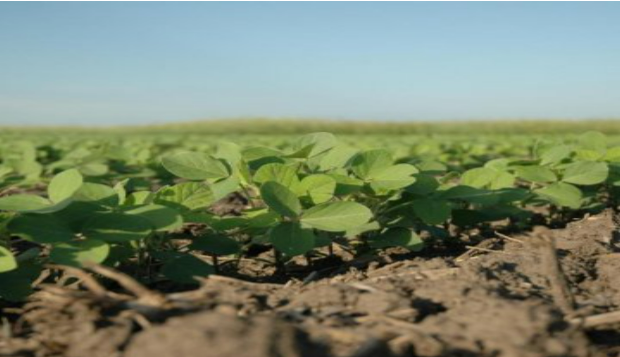
Swanton and colleagues now report in the 2014 Pest Management scientific journal that the answer has huge implications. “The seed-treatment label for Cruiser talked about improving seedling vigor. We wanted to know the mechanism. We tested it, and we were absolutely dumbfounded by the initial results. We didn’t anticipate any response,” Swanton says. Earlier work in a closely controlled lab setting proved that the mere presence of a nearby weed can weaken emerging corn. Seedling leaves exhibit a difference in light quality due to an adjacent plant (weed), and there are immediate changes in their internal chemistry. Normally, the plant loses – and never regains – a portion of yield potential if this occurs one or two days after emergence. This happens even before there is competition for nutrients and with no stress from pests or growing conditions. The yield loss can be about 3% to 5% from this initial response alone.
Swanton’s project reveals two fundamental things about thiamethoxam, the active ingredient in Cruiser. 1. Thiamethoxam protects early corn seedlings from early stress. 2. Thiamethoxam is a genetic trigger. The presence of the compound prevents the corn genetics from shutting down crucial early processes due to stress. Instead, plants maintain the antioxidant system that protects plants against stress. “No one has ever seen a seed treatment do this type of thing. Biologically, it’s pretty amazing,” says Swanton. Most seed treatments use insecticides or fungicides to protect plant health. A few recent treatments add certain micronutrients to feed the seedling and to improve plant vigor. “We provide the first evidence to show that seed treatments can be thought of as something other than crop protection,” Swanton says. “They can be used to actually enhance the stress tolerance of a plant. In mainstream science, seed treatments have never been thought of in that way. Thiamethoxam happens to be the model here, and it’s good news because there is truly benefit for thiamethoxam, but the concept is even bigger.” This discovery raises questions, though: How much thiamethoxam is required for the gene treatment as compared with pest control? How long does the treatment effect last? Can there be a label claim for a yield benefit as well as an early seedling health benefit? Does this effect happen with other crops where thiamethoxam already is in use? Can other compounds in this chemistry family also trigger activity?
To see if the finding held up on a global scale, Robertson and colleagues reanalyzed more than 200 experiments, each examining nitrous oxide emissions of multiple fertilizer levels, across 84 locations worldwide. The results confirm that excess fertilizer can exponentially boost the emissions of microbes, the team reports June 9 in the Proceedings of the National Academy of Sciences. From this finding, Robertson infers that some farmers are using far more fertilizer than they need to, yielding more nitrous oxide than scientists had expected. The good news is that the study provides a clear path to lower nitrous oxide emissions, says soil scientist Timothy Griffis of the University of Minnesota in St. Paul. There are many easy methods for assessing how much nitrogen-based fertilizer is right for a crop field, so addressing overuse could be simple, he says. But the exponential relationship between fertilizer and gas still doesn’t entirely account for the emission discrepancy, says soil scientist Rod Venterea of the U.S. Department of Agriculture in St. Paul. There must be other factors upping the nitrous oxide in the atmosphere, he says, including unknown emissions from nitrogen fertilizer after it leaves farms via streams and erosion.
It’s a broad-spectrum neonicotinoid insecticide used for control against a wide variety of
commercially important crop pests. It is available as a foliar spray or as a soil treatment as well
as a seed treatment. As a seed treatment in Cruiser, it is part of an integrated pest management
strategy using low doses to target the insect pests. Applied to seed, it increases seed germination,
root growth, seedling height, and biomass accumulation. Until now, the mechanism for this was
not well known. An important plant strategy during stress periods is avoidance of accumulating
hydrogen peroxide in plant tissues. Previous work by Swanton identified a shade-avoidance
stress response in corn seedlings in the presence of neighboring weeds.
However, in this study, seeds treated with thiamethoxam did not exhibit the typical shade-
avoidance response. In fact, they showed enhanced root development and seedling vigor even
under light-quality stress (shade). Thiamethoxam reduced the release of hydrogen peroxide by
lipids and, thus, reduced the extent of cellular damage that would have been expected. In turn, it
reduced the energy needed for cellular repair and allowed that energy to go into continuing
growth and tissue maintenance. As a crop protection company, Syngenta is Canada’s leading
provider of seed care products and technology. It has registered thiamethoxam for insect
protection treatments in most major field crops, says Harold Wright, Syngenta biological
assessment manager, eastern Canada. “Growers have seen this early-season vigor in crops like
corn, soybeans, canola, and cereals,” says Wright. “The research Clarence has done to date is
with corn, but the effect is seen in other crops commercially and in research.”
He says Swanton’s work would not negate the need for conventional weed control.
“The plant stress in the study was triggered using the presence of weeds. We know through Dr.
Swanton’s work that the mechanisms this initiates in the plant are similar to the effect of other
stresses,” Wright says. “The use of Cruiser would also play a role in mitigating these other stresses. Having early-season weed control in place along with the use of Cruiser would be the
best scenario to set up a crop for success.” Cruiser will continue to be marketed as the company’s
leading treatment for insect protection. Other Syngenta seed treatment products, such as
Vibrance, also are linked to early-season vigor due to their role in crop protection. Among the
Syngenta seed treatments, Wright says, the strongest early-season vigor boost is with Cruiser.
This research is helping scientists understand why.
Canadian and U.S. food inspectors have agreed on what they mean by a “field” in any restrictions they place on potato trade on account of potato cyst nematodes. The Canadian Food Inspection Agency (CFIA) and U.S. Department of Agriculture’s Animal and Plant Health Inspection Service (APHIS) on Tuesday announced new revisions to their Guidelines on Surveillance and Phytosanitary Actions for the Potato Cyst Nematodes. The changes follow requests from potato industry stakeholders, who wanted clarification on how CFIA and APHIS interpret the definition of a potato “field.”
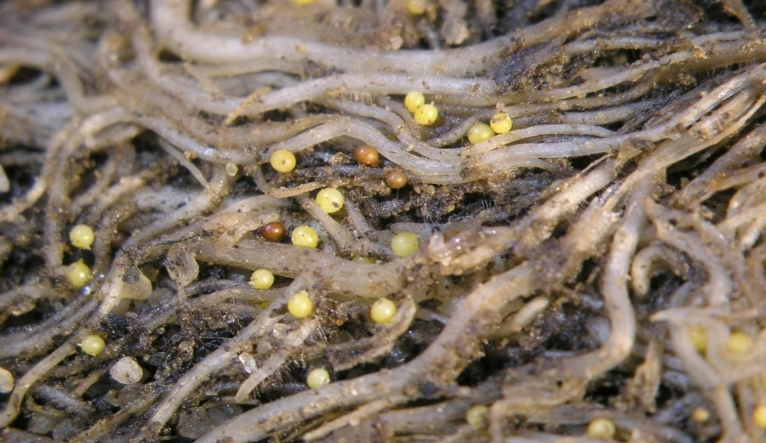
In the sections of the guidelines that deal with a potato plot under regulatory control, the two
agencies now say a “field” is “a distinct plot of land distinguished from neighbouring plots of
land by physical boundaries such as roads, fences, waterways, etc.” In cases where potato cyst
nematode (PCN) presence is confirmed, CFIA and APHIS said, “the entire field as defined by its
physical boundaries will come under regulatory control.” But in the section of the guidelines that
deals with fields cleared to produce and ship seed potatoes for export to the other country, a
“field” is now “defined by the boundaries of the specific area of land that was surveyed for
PCN.”
Any such fields, if approved for seed potato export, must first test negative for PCN in approved
surveys, must have never had a PCN detection and must not otherwise be under PCN regulatory
control. For approved fields, under that section, boundaries must be permanently recorded and
traceable using GPS co-ordinates or an accepted form of “physical markers.” If an area of land sampled for PCN differs from one potato crop to the next, only the area sampled in common to
those two potato crops would be the “field” eligible for the PCN survey exemption, assuming all
its PCN survey results are negative. The golden nematode and pale cyst nematode species of
PCN are quarantine pests in both Canada and the U.S. If left unmanaged, the two PCNs are
known to reduce yields of potatoes and other host crops, such as tomatoes and eggplants, by up
to 80 per cent. PCNs are soil-borne pests that are considered “very difficult” to eradicate because
they can persist, dormant in soil, for decades, according to CFIA. Both PCNs have been
confirmed in 65 countries, including the U.S.
A wheat crop in Lincolnshire, England, yielded 246 bushels per acre this year. It broke a record set previously in New Zealand of 233 bu. per acre. Peter Johnson thinks prairie farmers set their sights too low when it comes to wheat yields. “Wheat is the most responsive crop we grow to management, and yet it’s the crop that we manage the least,” said Johnson, a former wheat specialist with Ontario’s agriculture ministry.
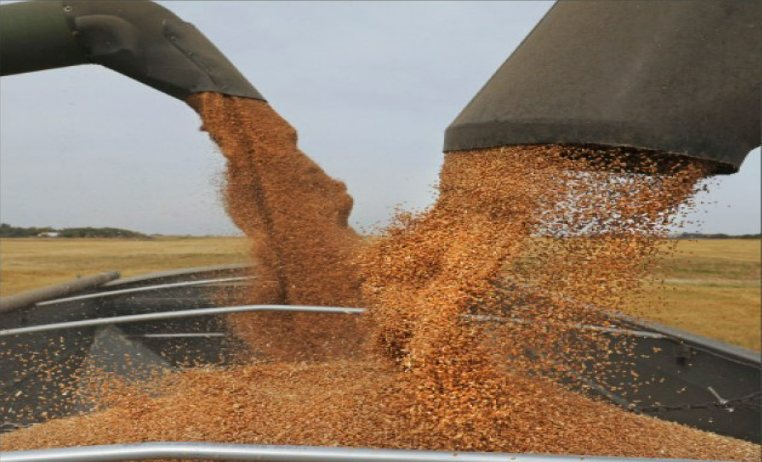
“Across the world it’s just kind of a rotation crop…. Wheat, you just put it in the ground, you
expect a good yield and if it doesn’t do that, you’re mad at it.” Johnson told the Dec. 8-9
Farming Smarter conference that England and New Zealand have maritime climates with longer
growing seasons, but he doesn’t believe water limits are the reason for lower wheat yields on the
Prairies. “It does need water, I don’t argue with that, but boy, it does not need as much water to
get high yields as what a lot of people think,” he said. He said the real key is to manage for high
yields and cultivate a mindset that wheat is a real crop that can yield 200 bu. per acre if given the
right conditions.
Those conditions begin with variety selection. In the United Kingdom, development of dwarf
varieties was a key to yield increases. So was the arrival of improved fungicides that increased
the crop’s nitrogen use. In Canada, wheat breeders were once handicapped by the need to
maintain kernel visual distinguishability, said Johnson. “They had to breed in handcuffs because
of the quality parameters that they had to fit. I think you should worship the ground that
(Agriculture Canada wheat breeder) Ron DePauw walks on.” In a later speech about wheat
breeding, DePauw agreed that new rules have made a difference. “That has certainly freed up our abilities, our resources, to target other traits.” Cereal yield has three components: heads per sq.
metre, grains per head and the weight of each kernel.
Even minor improvements to any one of these will increase yield, but the biggest gains can be
made if the crop has optimum conditions at the head-filling stage. Johnson said he doesn’t
consider seeding rate to be as important as other factors. A low rate simply increases tillers for
the same number of heads per sq. metre. He also believes in splitting nitrogen applications.
Properly timed nitrogen can increase tillers, and one more tiller means 35 more kernels per sq.
foot. If fertility leads to one more seed per head, that’s 65 more kernels per sq. foot. “(At
anthesis), if I go from 35 to 48 or to 54 seeds per head, man, the yield potential is unbelievable,”
he said. Johnson said growers in southern Alberta see 50 percent of potential wheat yields. “That
really stinks. We could do a lot better.”
Ideal temperatures for wheat are 18 °C during the day and 10 °C at night, and those conditions
aren’t uncommon in the region. He recommended early planting so there is more grain fill during
lower temperatures and less in the highest heat of summer. “The earlier we can get it to head, the
more yield potential we’re going to have.” He said fungicide timing is also a key yield driver.
Small plot data indicates an eight to 10 percent yield increase from fungicides, and the later they
are used, the greater that increase. DePauw said numerous promising new wheat varieties are in
development, and there is already potential for 100 bu. per acre yields of hard red spring on dry
land and 150 bu. under irrigation. He said wheat breeding is entering a new and exciting era. “I
wish I was starting my career over again” because of the potential that exists in wheat
improvements.

Over the last 130 million years or so, flowers have evolved from pollen-making pipsqueaks
about a millimeter across to include blossoms that are large, showy and fragrant. Scientists have
identified some 250,000 species of flowering plants, pollination ecologist Stephen Buchmann
writes in The Reason for Flowers. About two-thirds of those species are endangered or
threatened, mostly because of habitat loss but also thanks to climate change. Bottom of Form
Buchmann does much more than chronicle the evolution of flowers since the dinosaur era. He
explores the myriad roles that blossoms play in the human realms of art and literature as well as
in food and the economy.
The fruits and seeds of animal-pollinated flowers account for about one-third of the average
human diet, Buchmann reports. Flowers are also big business: Worldwide, about 15 billion stems
make their way to buyers each year. More than half pass through the most sprawling building in
the world, a hangarlike facility near Amsterdam. The building covers more than half a square
kilometer and hosts auctions processing about 21 million flowers each day. Breeders can easily
spend $100,000 bringing a new variety of flower to market; those striving to create a holy grail
of blossoms such as a truly blue rose may spend millions. The Reason for Flowersis a riveting
account of the science, history and culture surrounding blooms since the dawn of humankind.
Besides inspiring myths and perfume manufacturers, flowers have fueled economic manias that
rival the dot-com bubble of the late 1990s: During the height of tulip enthusiasm in the Netherlands in the 17 th century, purchasing a tulip could cost more than hiring a famous Dutch
artist to paint its image.
This question may surface in your head as you harvest your corn this fall: Is there a better way to predict corn yields during the growing season?
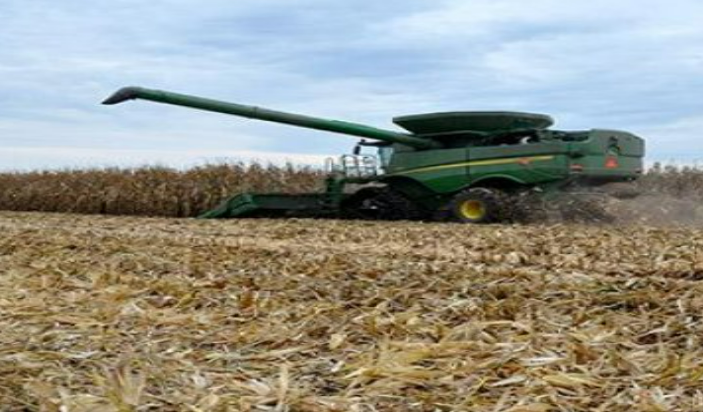
Haishun Yang thinks so. The University of Nebraska agronomy professor is a computer
modeling expert who is using a program to crunch numbers into useful data for farmers. The
program he’s developed, called Hybrid-Maize, is a computer application that lets you upload all
the pertinent weather (and some agronomic) conditions for your farm. At any point in the
growing season, it will take your rainfall, soil moisture, daily temperature readings, planting
date, and plant population, and give you an estimated corn yield. Yang says the Hybrid-Maize
software has a very friendly graphic interface and is easy to use. Yang says the model relies on a
combination of real-time weather data and historical weather data, the single biggest influencer
of corn yields. At whatever point in the season you run the yield estimate, it first uses this
season’s up-to-date weather, then it uses each of the previous years in the historical data to finish
the rest of the season.
For instance, if you run the program on June 15, it takes conditions up to that point and assumes
the rest of the season could look like each of the previous years from that point forward. As the
season progresses, the yield prediction gains accuracy as current weather is updated. “If you have
20 years of historical data, the program will calculate 20 possible outcomes from best to worst
and then give you an average,” says Yang. “As the summer goes on, it gets closer to predicting
the actual final yield, as there is less time to deviate from the average.” In 2014, Yang’s group
tested the Hybrid-Maize model with Extension collaborators from 25 locations across the Corn Belt (Kansas to Ohio). They entered their local conditions from various official reports, and the
model estimated their local yields. If enough of those local collaborators (including farmers) are
strung together, Yang says, the data could be used to estimate yield on a regional, state, or
national basis throughout the growing season.
The more participants and the more historical data that are included, the more accurate it
becomes at predicting final yield. “When the Hybrid-Maize model simulates corn yield of a
particular field, it assumes that the field is uniform in terms of crop management and soil
properties,” says Yang. “Such a field can represent an area where conditions are similar,
including weather, crop management, and soil properties.” The good news is that most of the
data needed is available in public records such as National Weather Service (NWS) data or
USDA digital soil maps. Other pertinent things, including planting date, plant population, and
hybrid maturity of the growing crop, are also included as inputs. “All of this data is out there,”
says Yang. Surprisingly, he says, the NWS data isn’t as easy to access as you might think. Some
of its stations are not integrated into the national network, so it’s not automatic that you can get
and upload its data.
Of course, yield estimations ahead of harvest have limitations. The Hybrid-Maize program can’t
account for excessive nutrient deficiencies, hail damage, weed infestations, or crop diseases. It
assumes those issues will conform to historical averages. “In a year when a crop disease is
unusually severe, this model will have a hard time picking up on it, because it doesn’t
incorporate ground observation,” says Yang. He points to the 2012 crop year as an illustration of
this. That year grew increasingly dryer as the summer wore on. Each biweekly yield forecast
assumed average or normal weather from that point on, but it only got drier. The full extent of
yield damage wasn’t known until harvest.
In 2014, the Hybrid-Maize model was very accurate at an early date in predicting near-record
yields. “It is noteworthy that in our first 2014 yield forecast on July 20, we anticipated with a
high level of probability above-average dryland corn at 11 of the 14 locations that ultimately
reached above-average yields,” points out Yang. Some cornfields in 2014 suffered from late-
season nitrogen shortages due to excess rainfall, he continues. The Hybrid-Maize model did not
account for that, and in a few cases, it predicted higher yields than actually materialized. Yang
says many people have shown interest in his computer model, starting with farmers. Also,
insurance companies, the seed industry, food companies, and the biofuels industry have great
interest in early forecasts of crop yields. “The more you know, the better,” says Yang. A similar
model for soybeans is in the beginning stages. In the future, he hopes to add inputs that will
make the Hybrid-Maize model better, such as local management issues like the amount of no-till
and water conservation techniques. “We wish we knew more about water stress on the crop at
different stages of production,” he adds. USDA crop reporting officials have been reporting in-
season yield estimates for years. Their estimates involve more local sampling of crop conditions
on the ground than does the Hybrid-Maize. Both systems are good, says Yang, but a combination
may prove to be the best. Hybrid-Maize is more efficient at pulling data together from various
sources, he says, because it doesn’t require people to go out and do the scouting.